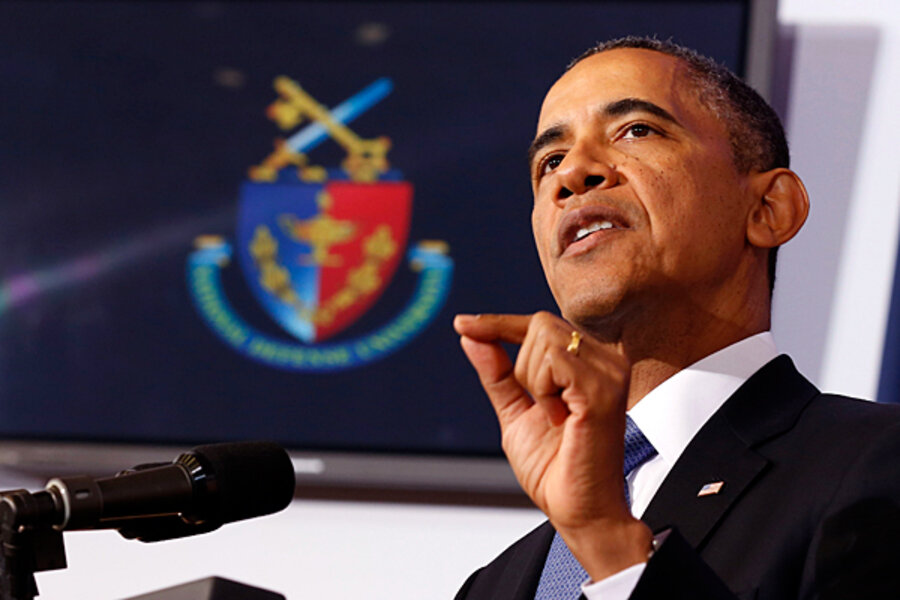Obama vows again to close Guantánamo: What are the sticking points?
Loading...
Six years after he first vowed to close the US military prison at Guantánamo Bay, Cuba, President Obama reiterated his commitment in a counterterrorism speech Thursday and outlined steps he would take to close the camp.
Mr. Obama indicated plans to slow down the war on terror, as he pledged to curb controversial practices like drone strikes as well as renew the efforts to close Guantánamo. But questions remain about how the president will handle a controversial and complex closure.
“History will cast a harsh judgment on this aspect of our fight against terrorism and those of us who fail to end it,” Obama said. “Imagine a future – 10 years from now or 20 years from now – when the United States of America is still holding people who have been charged with no crime on a piece of land that is not a part of our country. Look at the current situation, where we are force-feeding detainees who are holding a hunger strike. Is that who we are? Is that something that our Founders foresaw? Is that the America we want to leave our children?”
Since February, 103 of the camp’s 166 detainees have been engaged in a hunger strike to protest years of indefinite detention without formal charges. Some 32 strikers are being force-fed.
The hunger strike, which entered its 100th day last week, “affected the president’s thinking and played into the impetus for the speech,” according to a report in Politico.
Eighty-six detainees were cleared for release at least three years ago but are still being held because of a 2010 executive order barring detainee transfers to Yemen, where Al Qaeda is still active. This situation at Guantánamo has been an oft-cited grievance among opponents of the military prison.
Playing a lesser role in the decision to shutter Gitmo, and one that is less publicized, is the cost associated with housing detainees at the 11-year-old facility: $900,000 per detainee per year, costing taxpayers more than $150 million every year, according to a CNN report. By comparison, a typical federal prison inmate costs taxpayers about $25,000 per year.
“There is no justification beyond politics for Congress to prevent us from closing a facility that should never have been opened,” Obama said in his remarks Thursday. “To the greatest extent possible, we will transfer detainees who have been cleared to go to other countries. Where appropriate, we will bring terrorists to justice in our courts and military justice system, and we will insist that judicial review be available for every detainee.”
The president’s specific pledges included:
• Rescinding the executive order banning detainee transfers to Yemen, where a majority of the Guantánamo detainees are from.
• Asking Congress to lift restrictions on detainee transfers.
• Appointing an envoy at the State and Defense Departments to move detainee transfers forward.
• Calling on the Defense Department to identify a location where military commissions could be held on mainland US soil, instead of at Guantánamo Bay, Cuba.
Nonetheless, many questions remain on how the president would execute a closure. Among them:
• How will the administration handle detainees who are too dangerous to release but who cannot be prosecuted because of scant or inadmissible evidence?
• How will it ensure detainees transferred overseas do not return to the US to engage in terrorist activities?
• How will the US handle terror suspects captured in the future?
This much is clear: As the president renews efforts to close Guantánamo, he will be navigating new legal and logistical issues in the war on terror.






